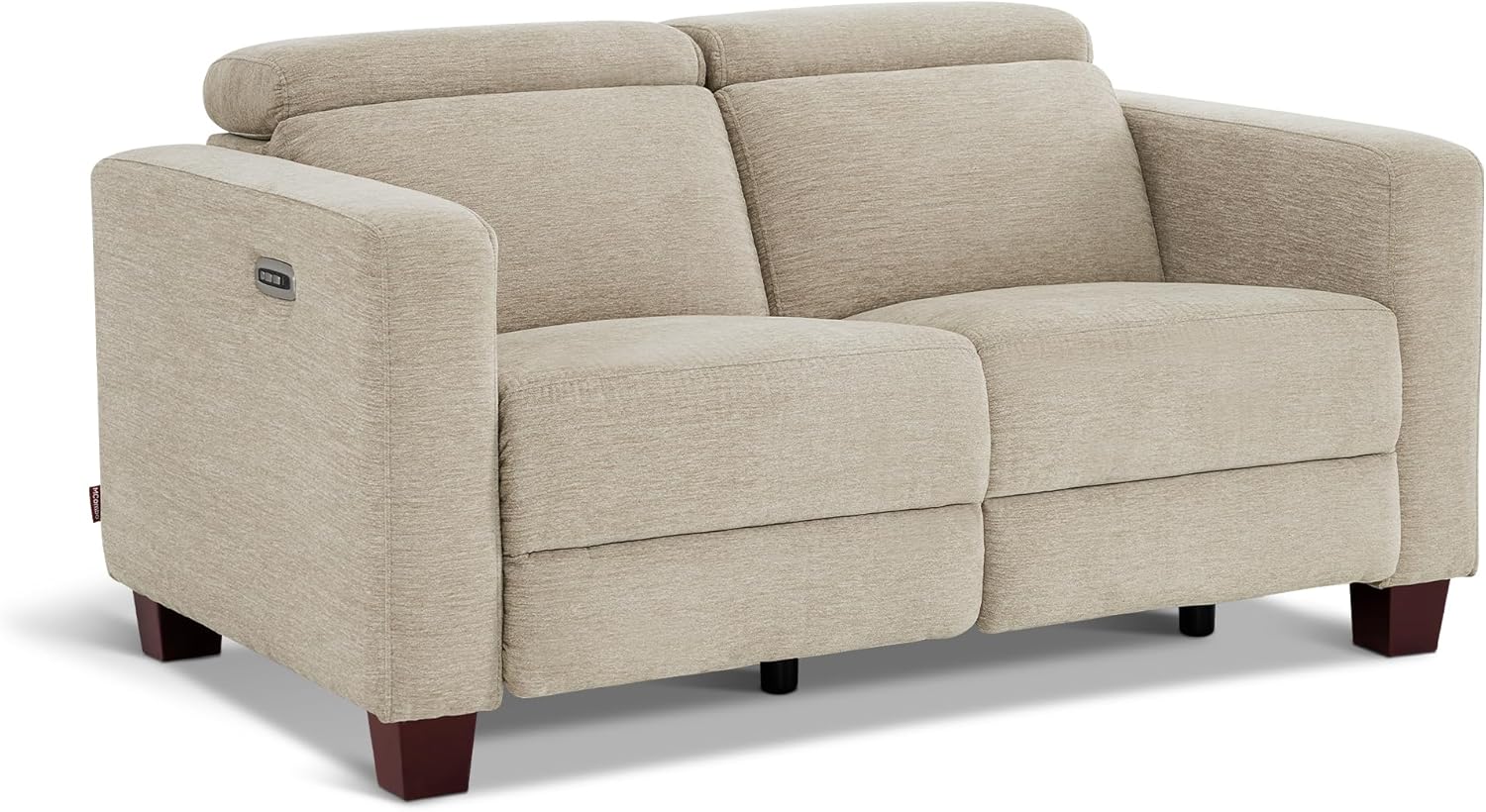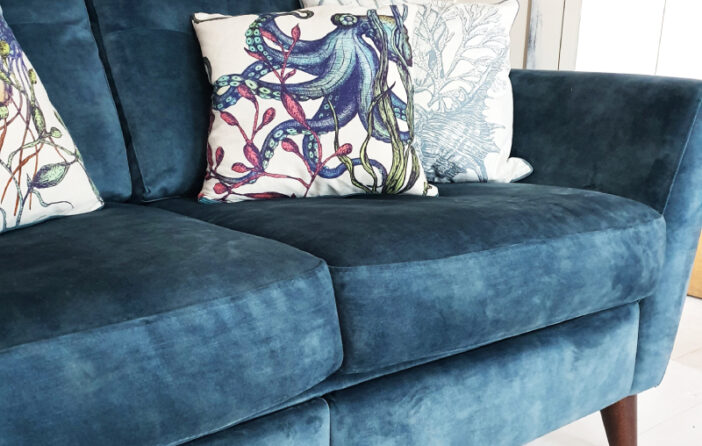Are Reclining Sofas Tacky? What Interior Designers Won't Tell You

image DFS
Picture this: You walk into someone's living room and there it is - a reclining sofa. Your brain does that thing where it can't quite decide if you're looking at the pinnacle of human comfort engineering or furniture's equivalent of wearing sweatpants to a wedding. This isn't just about taste. It's about a fundamental clash between two deeply American values: the pursuit of comfort and the performance of sophistication.
The numbers tell a fascinating story. Reclining furniture sales hit $4.2 billion in 2026, with 38% of American households owning at least one recliner. Meanwhile, searches for "modern living room ideas" explicitly exclude recliners at a rate of 73%, according to Pinterest trend data. So here we are, collectively spending billions on furniture we're simultaneously trying to hide from our Instagram feeds.
The aesthetic divide runs deeper than personal preference. It traces back to a 1928 patent by Edward Knabush and Edwin Shoemaker - two cousins in Monroe, Michigan who invented the first mechanical recliner by essentially strapping a porch chair to a series of springs and hinges. Their creation would evolve from Depression-era ingenuity into the overstuffed behemoths of the 1970s, those brown leather monuments to dad-comfort that became visual shorthand for "giving up on style."
But something interesting happened around 2015. Furniture manufacturers started noticing that millennials were buying recliners at unprecedented rates - just not the ones that looked like recliners. Enter the era of what the industry calls "stealth recliners": sofas that hide their mechanical nature behind clean lines and legs that would make a Danish designer nod approvingly. West Elm's "Enzo" recliner doesn't even mention the R-word until paragraph three of its product description. It's furniture in witness protection.
The Great Recliner Divide: What Design Psychology Tells Us
The reclining sofa occupies a unique position in what researchers call "domestic status signaling." A 2023 study from the Journal of Consumer Psychology found that furniture choices rank third in how people assess socioeconomic status from home photos - right after art and books, but before electronics or kitchen appliances. The recliner, specifically, triggered what researchers termed "class-ambiguous responses." Translation: people literally couldn't decide if owning one meant you'd made it or given up.
This confusion isn't accidental. The American recliner emerged from La-Z-Boy's brilliant marketing coup of the 1960s, when they positioned their chairs as symbols of masculine success - the throne a man earned after conquering the corporate world. Watch any Father's Day commercial from 1965 to about 1995, and you'll see the same narrative: successful man, reclining chair, implied kingdom. The message was clear: real achievement meant never having to sit up straight again.
But somewhere between Friends and Fixer Upper, the cultural script flipped. The contemporary living room became a stage for performing taste, and recliners - with their obvious mechanics and comfort-first design - read as too honest about their intentions. It's the same phenomenon that killed waterbeds and conversation pits: anything that too obviously prioritizes physical comfort over visual minimalism gets coded as "tacky."
The Pro-Comfort Coalition: Why 38% of America Doesn't Care
 MCombo Power Reclining Loveseat from Amazon
MCombo Power Reclining Loveseat from Amazon
Here's where it gets interesting. The same Pinterest data that shows recliners being excluded from "modern living room" searches also shows "reclining sofa" searches up 147% year-over-year. People are simultaneously rejecting and embracing these things, often the same people, sometimes in the same browsing session.
The pro-recliner camp has developed its own sophisticated defense. Visit any furniture forum (yes, these exist, and yes, they're surprisingly passionate), and you'll find elaborate arguments about lumbar support angles, zero-gravity positioning, and something called "wall-hugger technology" that lets recliners work in smaller spaces. These aren't lazy boy defenders - they're comfort optimization engineers who've done the math on spinal alignment.
The accessibility argument carries real weight here. The Americans with Disabilities Act doesn't cover private homes, but if it did, recliners would probably be mandated. Occupational therapists prescribe them. Medicare sometimes covers them. For millions of people with mobility issues, chronic pain, or circulation problems, a reclining sofa isn't about lifestyle choice - it's about being able to sit down without planning your exit strategy. (And unlike leather options that can stick to skin in summer or feel cold in winter, modern recliners come in temperature-neutral fabrics specifically designed for extended contact.)
Then there's what I call the "honesty factor." A high-end design blogger recently went viral for admitting she watches Netflix on a reclining sofa she hides in her bedroom. "My living room is for photographs," she wrote. "My recliner is for living." The post got 400,000 likes and sparked what Apartment Therapy called "The Great Recliner Coming Out of 2024."
The Design Purist Resistance: When Comfort Meets Aesthetics
The anti-recliner position has its own compelling logic, rooted in something deeper than snobbery. Interior designers point out that recliners fundamentally break what they call "visual flow" - that sense of cohesion that makes a room feel intentional rather than accumulated. A reclining sofa, especially in its extended position, creates what one designer called "a spatial interruption that announces its function like a billboard."
The space argument holds up under scrutiny. A typical reclining sofa needs 14-18 inches of clearance from the wall to fully extend. In urban apartments where every square foot costs anywhere from $500 to $2,000, dedicating that much dead space to occasional leg elevation reads as almost obscene excess. One Manhattan designer calculated that the "recliner zone" in her client's apartment represented $36,000 worth of unusable real estate.
But the real opposition isn't about space or even aesthetics - it's about what designers call "aspirational living." The modern living room, particularly as performed on social media, serves as a kind of domestic museum, curated to suggest a life of tea-drinking, book-reading, conversational sophistication. A recliner punctures this fiction. It admits that sometimes you just want to horizontally binge-watch seven hours of a show about people making pottery.

The Stealth Recliner Revolution: Having It Both Ways
This is where capitalism does what capitalism does best: creates a product for every anxiety. The "motion sofa" market (industry-speak for recliners that don't look like recliners) grew 23% in 2026 alone. These pieces use names like "power-adjustable seating systems" and "dynamic comfort solutions." Nobody says recliner anymore. It's like how nobody sells used cars - they're all "pre-owned vehicles" now.
The technology has gotten genuinely impressive. German engineering firm Himolla developed a reclining mechanism that's completely invisible until activated, using the same servo motors found in luxury car seats. The Danish company BoConcept makes a recliner that looks like it escaped from a museum of modern art - all angles and leather that costs more per square foot than most people's rent. These aren't your grandfather's recliners, the marketing implies, though functionally, that's exactly what they are.
Room & Board's bestselling "Quinn" sofa comes with what they call "an optional power relaxation feature." For an extra $800, your minimalist sofa transforms into - well, a recliner, but one that maintains its clean lines even while extended. It's furniture that code-switches, performing sophistication for guests and comfort for inhabitants.
The price points tell their own story. Traditional recliners average $400-1,200. Stealth recliners start at $2,000 and climb toward $8,000. You're not just buying comfort; you're buying the absence of shame. It's a tax on maintaining your design credibility while still being able to put your feet up. (At those prices, furniture protection plans suddenly start making actuarial sense - especially for pieces with complex mechanical components that weren't meant to support a teenager's full-body flop for the fifteenth time today.)
The Verdict: Context Is Everything
The tacky question ultimately reveals more about the person asking than the furniture being judged. In a 2024 survey of interior designers, 67% said reclining sofas could work in the "right context" - a phrase doing so much heavy lifting it should probably get its own gym membership.
That context turns out to be surprisingly specific. Recliners work in what designers call "honest spaces" - media rooms, dens, finished basements. Places where the room's function aligns with the furniture's purpose. Put a recliner in a dedicated TV room, and it's appropriate. Put the same recliner in a formal living room, and it becomes what one designer called "a comfort crime scene."
The generational divide adds another layer. Gen Z, who grew up watching their millennial siblings stress about Instagram-worthy apartments, shows remarkably little interest in furniture shame. TikTok's "comfort over everything" movement has videos of twenty-somethings proudly showing off their "goblin mode" living rooms, complete with the puffiest, most mechanically complex recliners money can buy. They're not hiding their recliners; they're making them the centerpiece. The material choice matters here too - leather recliners face their own style debates, with ongoing questions about whether traditional materials translate to modern sensibilities.
Market data suggests this isn't just youth rebellion. Sales of traditional-looking recliners - the ones that obviously recline - are growing faster than stealth models for the first time since 2008. Ashley Furniture's buyer notes from 2026 include the phrase "comfort visibility trending upward," which is corporate speak for "people are done pretending they don't want to lie down."
The engineering behind modern recliners echoes midcentury designers' willingness to experiment with unconventional approaches. Just as designers once incorporated cork and molded aluminum into seating, today's recliner mechanisms represent their own form of material innovation - even if the aesthetic philosophy has shifted from revolutionary to apologetic.
Conclusion: The Comfort-Status Complex
The reclining sofa exists at the intersection of American anxieties about class, comfort, and authenticity. It's furniture that forces a choice: prioritize how you want to live or how you want to be seen living. The fact that there's now a multi-billion dollar industry devoted to helping people avoid making this choice tells you everything about where we are culturally.
Maybe the real question isn't whether reclining sofas are tacky, but why we've created a world where comfort requires an aesthetic apology. The Danish have hygge. The Japanese have entire furniture categories dedicated to floor-sitting comfort. Americans have... recliners that pretend they're not recliners, bought by people pretending they don't want them, for rooms that pretend nobody actually lives in them.
But here's the thing about that $4.2 billion in annual recliner sales: somebody's buying them. Somebody's sitting in them. And according to consumer satisfaction surveys, reclining furniture has a 94% satisfaction rate - higher than smartphones, cars, or streaming services. Maybe the real luxury isn't having a living room that looks like a museum. Maybe it's having one where you can actually recline without irony, shame, or a sophisticated explanation for why this particular recliner is different.
The market has spoken, even if we're not quite ready to listen: America wants to put its feet up. Whether we'll admit it on Instagram is another question entirely.